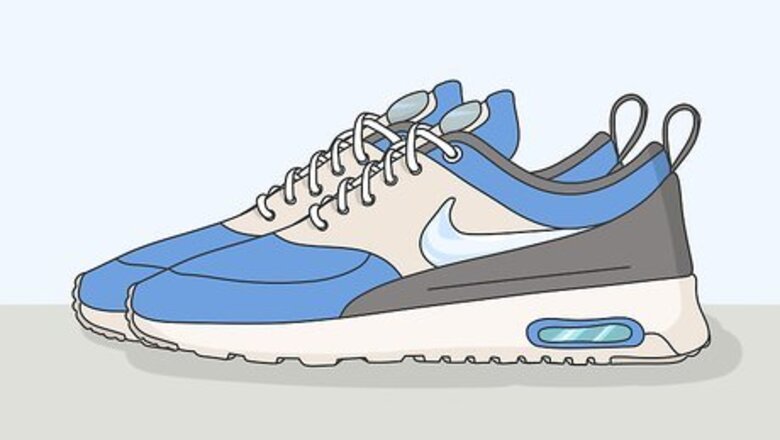
views
Wearing the Right Shoes
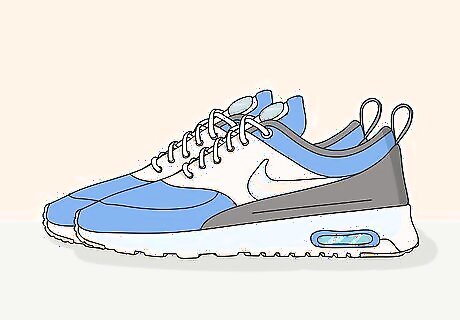
Choose a comfortable pair of running shoes. Before you start running, go to the store and try on several pairs of running shoes. If you can, take a quick jog around the store to see how they feel. Trust what your feet tell you and choose the pair that feels most comfortable and supportive to you. A good pair of shoes should fit firmly on the heels so they don’t slip out when you walk or run and give you plenty of room to wiggle your toes.Tip: Some people find that running barefoot or in minimalist “barefoot shoes” can prevent or reduce shin splints. If you choose to try barefoot running, start gradually so that your body has time to adjust to the mechanics of this type of activity. There are numerous types of running shoes on the market, so the choice may seem overwhelming. However, recent research suggests that the healthiest shoes for you are likely the ones that feel best on your feet! Comfortable shoes that conform well to the shape of your feet will help reduce the impact on your legs when you run, which will minimize your risk of developing shin splints. Make sure you select shoes that are designed for running as opposed to other types of athletic activities, such as tennis or soccer.
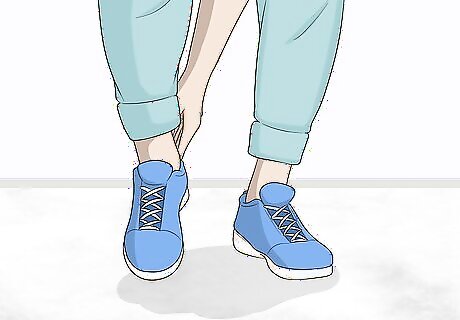
Replace your shoes every 350–500 miles (560–800 km). Over time, the soles of your running shoes will begin to wear out, which can lead to discomfort or injury. Get new running shoes after you’ve run approximately 350–500 miles (560–800 km) to minimize the impact on your feet and legs. Even if your running shoes haven’t gotten that much use, it’s still a good idea to replace them after 1 year. The soles can start to warp as they age. If you don’t want to throw away your old running shoes, you can still use them for walking as long as they’re comfortable.
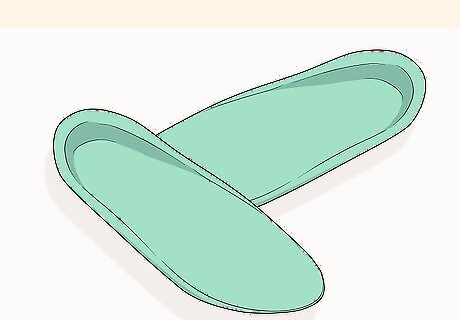
Fit your shoes with shock-absorbing insoles to reduce impact. Shoes with hard insoles or poor arch support can contribute to pain from shin splints. Try fitting your shoes with insoles that support your arches and provide a shock-absorbing cushion for your feet. Orthotic inserts that are designed to keep your foot and ankle stable may also help. Ask your doctor, an orthopedic specialist, or a physical therapist for advice. You can purchase supportive inserts in a shoe store or pharmacy, or have them specially made by a physical therapist or orthopedist.
Modifying Your Exercise Routine
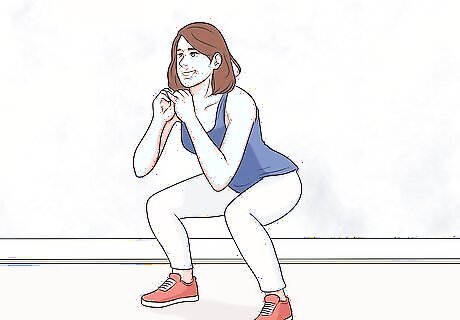
Warm up your muscles before you run. Doing a pre-run warmup can improve circulation in your muscles, make your joints more flexible, and reduce your chance of injuries like shin splints. Before you run, spend at least 5 minutes doing a slow jog or brisk walk to get your blood flowing. If you have time, follow up with 5-10 minutes of dynamic movements, such as:Be aware: You may have heard that you should stretch before running. However, doing static stretches (i.e., deep stretches that you hold for up to a minute) before running can actually loosen your muscles too much and make you more prone to injuries. Squats Lunges Mountain climbers Skips
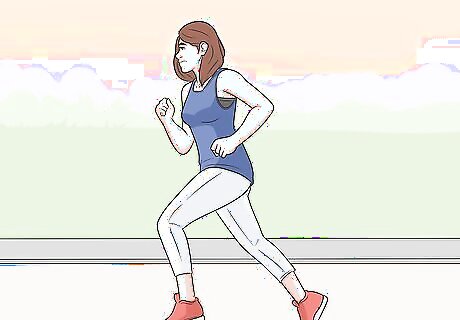
Increase your running time, distance, and intensity gradually. Doing too much, too fast can put stress on your shins and lead to shin splints. Work up to any new running goals gradually, and ease back if you start to experience pain. Follow the rule of 10s as you increase the duration and intensity of your exercise. Every week, increase the amount of time you spend running by 10%, and also increase the ratio of running to walking by 10%. For example, if you’re planning to work up to running 5 miles (8.0 km) every day, start by alternating between walking and light running for 20 minutes every other day.
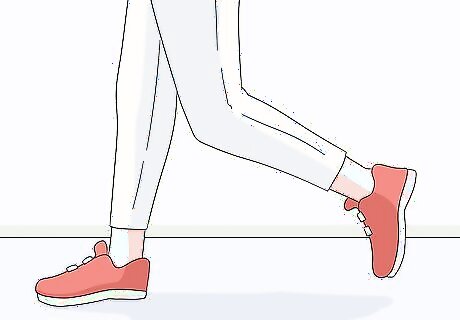
Run on a soft, even surface. Running on hard concrete or over rough, uneven surfaces can increase the impact on your legs, contributing to shin splints and other injuries. To prevent shin splints, choose a soft, level surface, such as a rubberized indoor or outdoor running track. If you don’t want to be restricted to running on a track, make the transition to harder or less even surfaces gradually. For example, if you regularly run 5 miles (8.0 km) on a track, cut back to 1–2 miles (1.6–3.2 km) when you first make the transition to running on a road or trail.
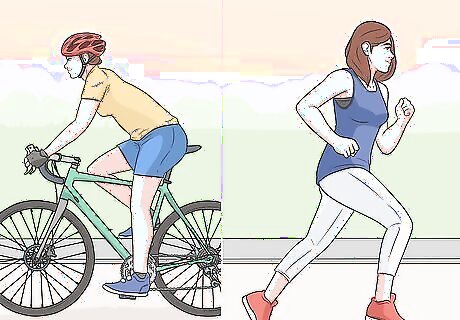
Alternate running with low-impact cardio exercise. You can help prevent shin splints by giving your legs a chance to rest and recover between running sessions. One way to do this is to take rest days in between runs—for example, you might alternate between running and strength training. To take a break without cutting back on the amount of cardio you get each week, switch between running and lower-impact exercises, like swimming, rowing, or biking. If you do cardio 5 days a week, alternate 3 running sessions with 2 cross-training sessions doing a low-impact activity. For example, you could run on Monday, Wednesday, and Friday, swim on Tuesday, and go cycling on Thursday.
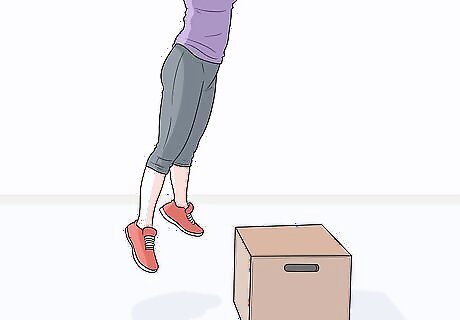
Do strength training to strengthen your legs and core. Building up the muscles in your ankles, legs, hips, and core can increase your stability and make you less prone to injury. Try doing a 20-minute strength training workout twice a week. Incorporate exercises such as: Box jumps Renegade rows Hip bridges Hamstring curls Single-leg deadlifts Hand release push-ups Back extensions Thrusters Stability ball jackknives Lower body Russian twists
Improving Your Running Form
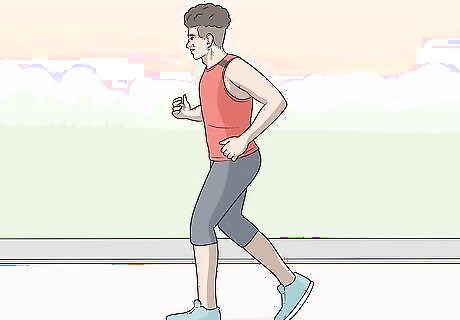
Take shorter, quicker steps. Increasing your step rate and taking shorter steps can help reduce shin splints and other running-related injuries. Studies show that increasing your step rate can considerably lighten the load on your hips, knees, and shins. When you run, make a conscious effort to keep your stride short and increase the number of steps you take. Try doing cadence counts. As you run, count the number of steps you take with one foot during a 30 second period. Take a 30-second break, then repeat the count. Do this 4-8 times, and try to add an additional step to each 30-second run.
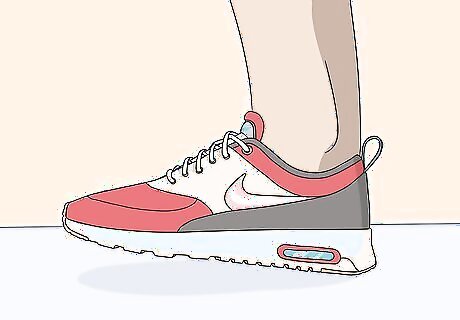
Strike the ground with your mid-foot. Hitting the ground with your toes or heels when you run can put you at greater risk of developing shin splints or other injuries. Make an effort to put your feet down flat when you run and hit the ground with the middle of your sole instead of the heel or toe. Improving your foot strike can start with increasing your step rate. A team of sports medicine specialists from the Cleveland Clinic recently found that runners are less likely to hit the ground with their heels when they take shorter, quicker steps.
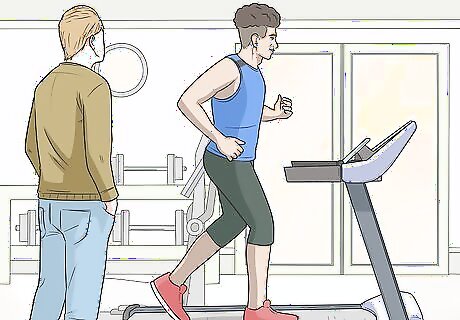
Work with a physical therapist to improve your gait. Shin splints can sometimes develop if you’re running in a way that puts extra stress on your legs and feet. Ask your doctor to recommend a physical therapist or orthopedic specialist who can analyze your running technique and help you improve your form based on their analysis. Your therapist might take a video of you running on a treadmill and analyze your gait visually, or they may use special sensors attached to various parts of your body to analyze your movement. Changes to your technique might include things like altering the way you put your feet down or reducing the rotation of your hips or knees while you run.
Treating Shin Splints
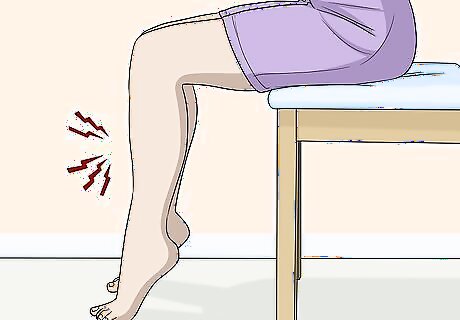
Avoid running until your legs have been pain-free for 2 weeks. If you do get shin splints, it’s important to rest your legs to prevent them from returning or getting worse. Avoid running or doing any other activities that cause pain for several weeks, then wait an additional 2 weeks after your pain is gone before you return to your regular activities. Build back up to running gradually so that you don’t re-injure yourself. To avoid becoming too sedentary while you heal, try low-impact exercises like swimming, cycling, or water running.
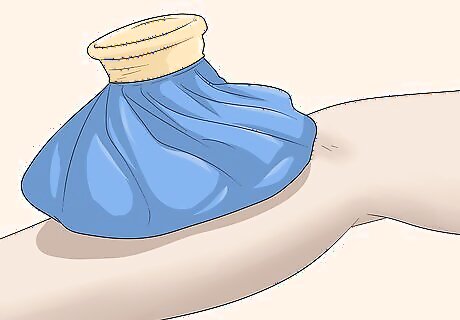
Apply ice packs to reduce pain and inflammation. Ice can help soothe your injured shins and minimize swelling. Wrap the ice pack in a thin towel or t-shirt and apply it to your affected shin(s) for 15-20 minutes at a time, 4-8 times a day. Do this for several days until your shins start to feel better. Always wrap up the ice pack to avoid damaging your skin.
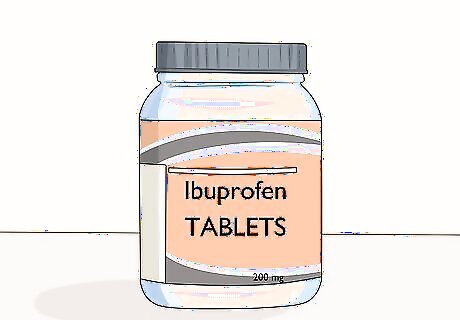
Take over-the-counter pain medications to manage pain. If your shin splints are really hurting you, take a medication like acetaminophen (Tylenol), ibuprofen (Motrin, Advil) or naproxen (Aleve). These over-the-counter painkillers can help you feel better while your shins are healing. Non-steroidal anti-inflammatory medications, such as ibuprofen and naproxen, can reduce inflammation as well as pain. Always take pain medications according to the directions on the label or the instructions of your doctor or pharmacist.
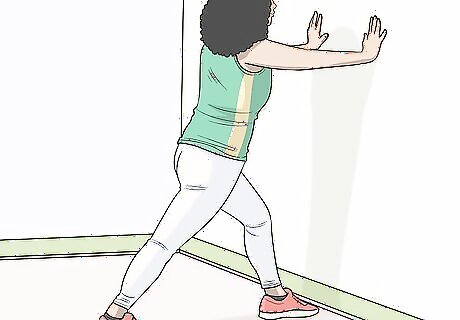
Stretch your shins and calves to improve flexibility. Doing light stretches might help your shins feel better. Try the following stretches to ease your pain and loosen up your muscles: Stand with your heels about 6–12 inches (15–30 cm) away from a wall and lean your back against the wall. Gently raise your toes toward your shins so that you’re resting on your heels, and hold this pose for 5 seconds before slowly returning your toes to the floor. Repeat this stretch 10-15 times. Face a wall with one foot about shoulder’s-width in front of the other. Bend your front knee slightly. Keep your back leg straight and push your hands against the wall so you feel a light stretch in your calf. Hold the stretch for 30 seconds, then repeat on the other side. While you’re performing a calf stretch against the wall, bend your back knee slightly. This will stretch the soleus muscles in the back and sides of your calf. Hold the stretch for 30 seconds, then switch sides.

See your doctor if your shin splints persist or return. If your shin splints keep coming back or don’t get better with rest and preventative care, there may be a more serious underlying problem. Make an appointment with your doctor or an orthopedic specialist so they can examine you and figure out an appropriate treatment. Other conditions that can cause similar shin pain include tendonitis, stress fractures, and chronic exertional compartment syndrome. Your doctor may order imaging tests, such as x-rays, bone scans, or MRI studies, to diagnose the cause of your pain.












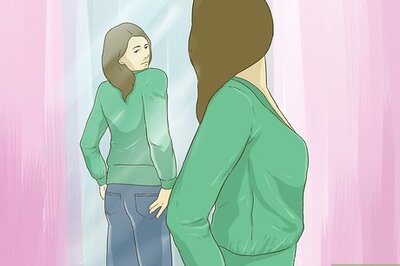







Comments
0 comment